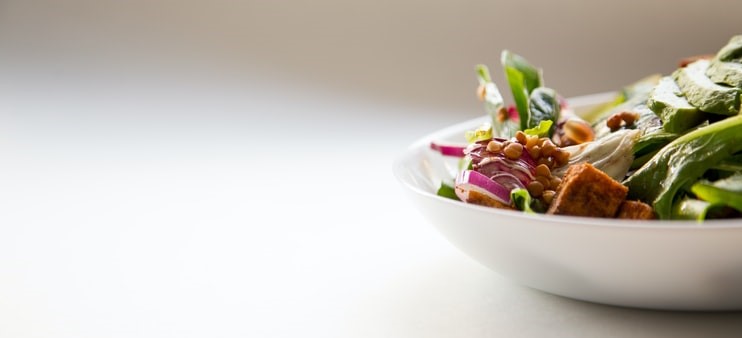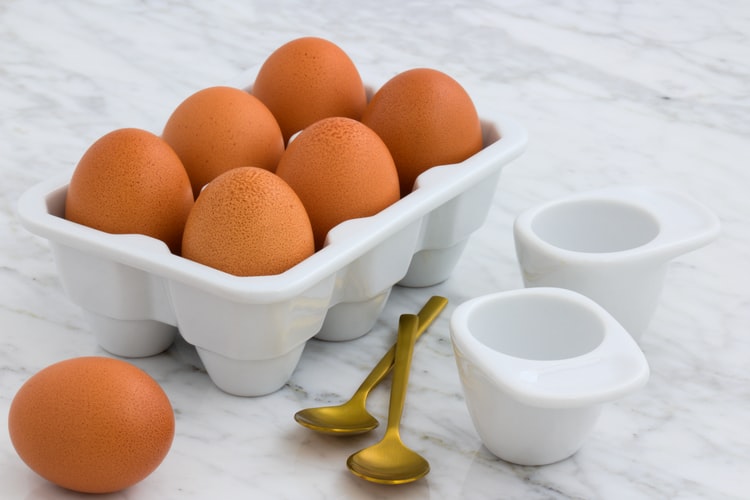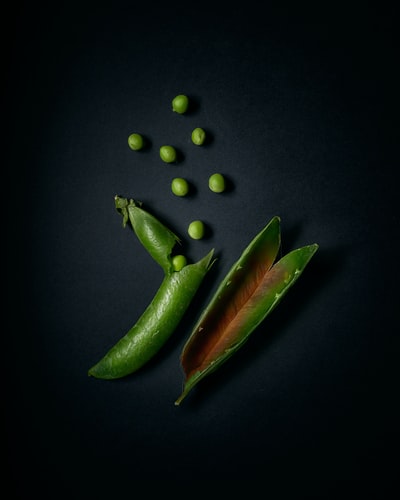Why Food Portion Sizes are Important for Weight Loss
EAT BETTER
Why Food Portion Sizes are Important for Weight Loss

Size matters. When it comes to weight loss, food portions are key; overeating can severely harm your efforts.
But, knowing how much to eat, and how much you’re actually eating, is easier said than done. Many of us aren’t really sure where to start or what we should be looking for. Here’s a handy guide to show you what’s what.
What are food portions?
First things first, let’s clear something up. ‘Portion’ and ‘serving’ are often used to mean the same thing. But, that’s not actually the case.
A portion is how much food you are served and how much you eat1. A serving is the ‘standard’ amount of food that quantifies recommended amounts2. For example, ‘cup’, ‘grams’ or ‘tablespoon’. Therefore, portions can be bigger or smaller than servings. Choosing appropriate amounts of food is key to healthy eating.
Food portion sizes for weight loss
Research has proven that if we’re presented with more food, we’re likely to eat more3. So, if weight loss is your goal, larger portions are likely to hamper your progress.
A balanced diet isn’t just about eating a variety of food, but also the right amounts. Eating too much of anything will not only be bad for your health, but also cause you to gain weight.
Portion size guide
Of course, it’s all well and good talking about portion sizes – but how much should we actually be eating? While recommended calorie intake and food amounts vary depending on a range of factors (e.g. weight, height, gender, age), there are some recommended portion sizes (UK) to help us prevent overeating:
Proteins
Those looking to lose weight should follow a high-protein diet, as it’s highly satiating and has been proven to boost your metabolism4. But, like anything, consuming too much, or more than your body needs, is never a good idea.
Recommended portion sizes for protein are:
- Cooked meat = around the size of a deck of cards (60-90g)
- Cooked fish = around the size of the palm of your hand (140g)
- Eggs = two medium sized ones
- Nuts = a handful
- Peanut butter = a tablespoon
- Lentils = four tablespoons5

Starchy carbs
Carbohydrates are essentially for energy, so try to include them in every meal. They should make up around 45-65% of your total daily calories6. Opt for whole grain options as much as possible, as they won’t spike your blood sugar – and they’ll provide more fibre.
Aim for 3-4 portions of carbs. The recommended amounts include:
- Cereal = 3 handfuls (30-40g)
- Dry pasta or rice = 2 handfuls (75g)
- Bunch of dry spaghetti = the same size as a £1 coin (75g)
- Potato = about the size of your fist (220g)
- Cooked pasta or rice = your hands cupped together (180g)7
Kitchen scales can help greatly when it comes to knowing how to count calories accurately. Eyeballing serving amounts can potentially lead to overeating, so it’s handy to have a guide.
Fruit and vegetables
With fruits and vegetables – you can’t really go wrong.
One portion of fruit or vegetables is around 80g worth. The World Health Organisation recommends we should eat a minimum of 400g a day8. The saying ‘5 a day’ counts for both fruit and veg, not 5 of each, but you can eat as much as you like. This can be a handful of grapes, a big piece of fruit, two smaller pieces, or a heaped tablespoon of vegetables such as peas.
If you’re finding it hard to get your fill, there are a number of hacks you can use. Snack on plenty of fruit, carrying it around with you so you’re not tempted to stop for a chocolate bar if you’re hungry. Add fruits and vegetables to smoothies, or to your breakfast porridge and cereal. Plus, aim for around half your dinner plate to be vegetables. Meal prepping in advance is also a great idea.
These foods will not only fill you up without being high in calories, but they’re full of vitamins and nutrients that benefit your overall health. As well as this, they’re a great source of fibre, which those looking to lose weight should eat more of.
Dairy
Dairy, or non-dairy equivalents, can provide both protein and calcium. Milk and cheese, for example, both fall into this category. However, you need to be careful – as some options can be very high in fat.
A glass of milk (dairy or soya) counts as a portion (200ml). Meanwhile, 30g of cheese (a portion) is around the size of a matchbox. This is a lot smaller than some may originally believe, which is why guessing portion sizes can sometimes go wrong.
Oils
Oils and spreads add flavour to food – but, if you’re not careful, they can cause you to consume a lot more calories than you planned to. Where you can, go for unsaturated fats such as olive oil and rapeseed oil, but ensure you don’t overdo it still. Spray oils can also help you reduce amounts.
Recommended portions include
- Butter = one teaspoon
- Oil = one teaspoon
- Low fat spread = two teaspoons
- Salad cream = one teaspoon9
How to cut down your portion sizes
Even if we have a good idea of how much we should be eating, cutting portions down is often easier said than done. Truthfully, we can help ourselves eat less without feeling hard done by, or like we’re going without.
Here are some top tips for portion control:

1. Use smaller plates
This one’s a bit of a mind game, but the smaller your plate, the easier it is to make it look full. So, you can trick your brain into thinking a ‘smaller than normal’ portion is just as satisfying10.
After all, the emptier our plates, the more likely we are to want to fill them. The less space there is – the easier it is to fill them up!
2. Weigh your food
This can help give you a more accurate guide and inform you of how much you’re really eating. What’s recommended as a serving on a packet or box can often be a lot smaller than expected.
3. Use measuring cups
Again, these can significantly increase accuracy when it comes to making sure calorie counting works. Many people have found this to be a helpful weight loss method11.
4. Pay more attention to how much is on your plate
It might sound obvious, but really pay attention to how much you’re eating and what’s on your plate. Mindless eating often results in people consuming more than they really need or want.
5. Drink water while you eat
Being full will help you eat less and cut down those portion sizes, and drinking water while you eat will help you fill up faster. You should also try and eat slowly – as eating fast makes us likely to consume more.
6. Have a break after you eat
Before eating anything else, such as dessert, take a breather.
Your stomach can take up to 20 minutes to register that it’s full – enough said! Satiety hormones are released as we eat. 20 minutes has been found to be enough time for your stomach to tell your brain it’s finished eating12. This is another reason to try and slow down.
7. Don’t finish off everyone else’s leftovers
We’ve all been there. When other people leave food, such as our partners or kids, it’s really tempting to help them finish it. But, you can unintentionally double your portion sizes doing that. So, try and avoid – regardless of how tempting something looks.
8. Check labels for serving sizes
Sometimes a packet or box will show the calories for two servings rather than one – so ensure you double check to make sure your portions are correct.
9. Opt for homemade as much as possible
We tend to eat more when dining out, as portions are larger. Plus, we don’t know how our food has been prepared. Making your own meals gives you a lot more control and allows you to make healthy choices.
10. Avoid distractions while eating
It’s easy to eat while doing other things, such as watching TV, or working at the computer. But, research has proven that this will make us more likely to eat more13. So, practice mindful eating.
11. Load up your plate with vegetables
What are full of nutrients and fibre, but low in calories? Yep, you guessed it, vegetables. Aim for around half your plate to be full of them, and try to include them in every meal. They’re very high in volume, meaning they’ll fill you up, without being calorie dense.
12. Cut down on alcohol
Alcohol stimulates the brain in a way that makes us eat more. It switches the brain into ‘starvation mode’, increasing both hunger and appetite, which explains why people eat more when they’ve consumed alcohol14. You don’t have to cut it out completely, but cutting back is a good idea.
13. Avoid doubling up your carbs
It’s easy to double your helping of carbs, such as rice and naan, burger bun and chips… The list goes on! Every now and again it’s a good idea to cut down. You’ll still have a highly fulfilling meal, but you’ll be dramatically reducing how much you eat. Ask yourself, do you really have to have both every time?
14. Cut down on calorie dense, low satiation foods
Who doesn’t love a sugary treat or a chocolatey dessert? You don’t have to go without your favourite treats, but you should opt for more filling options (rather than calorie dense ones) where possible. For example, a donut might be delicious – but it’s unlikely to fill you up.
15. Put less on your plate
The more that’s put in front of us, the more we’re likely to eat. The idea of ‘clearing your plate’ has been ingrained in many of us since childhood, but it’s not always a good thing. It can cause people to unwittingly overeat.
Eating less doesn’t mean going hungry
Most of the time, reducing portion sizes is about eating the right types of foods in the right way. You don’t have to go hungry, or feel less satisfied. Weight loss is about compromise and cutting down – not completely cutting out major food groups or your favourite treats. The key to portion control is being mindful and aware of what you’re putting on your plate.